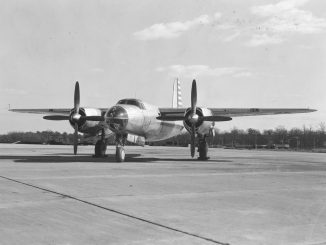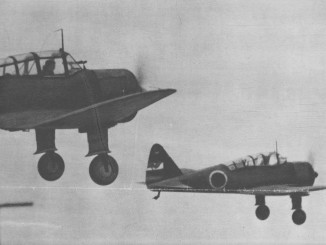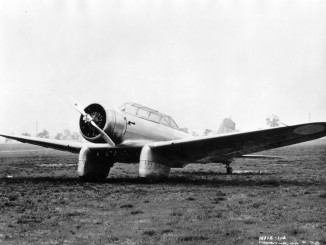
The origins of the Type 96 bomber, later codenamed “Nell” by the Americans, lay in Admiral Isoruku Yamamoto’s plans for attacking enemy battleships and land installations in the far reaches of the Pacific. The new bomber was to have an unprecedented ability to carry a torpedo over long distances at high speed, in order to be able to strike the American battle fleet as it crossed the ocean. These requirements necessitated a greatly reduced armour profile for the type, and an extremely limited provision for defensive armament. The Hiro G2H (Type 95) was an initial attempt at meeting these requirements, but its design included a number of outdated features including fixed landing gear and it did not have sufficient speed or range for the role envisaged – just 8 examples of the type were produced before attention switched to the successor G3M.
Initial designs for the Type 96 had no defensive guns at all, because the type thought fast enough and high-flying enough to evade contemporary enemy fighters and AA fire. To offset any potential developments in interceptors, it was thought that the new A5M fighter would be an adequate escort for missions where the G3M’s speed would not be a factor, such as the secondary role of low level, low speed torpedo bomber. In order to meet the long range and high speed requirements, the aircraft’s structure was kept very lightweight, including a deliberate decision not to include self-sealing fuel tanks. Type 96s had a primitive bombsite in comparison to American Norden, but this was not likely to be a major problem for low level torpedo bomber.
Type 96s were moved within range of China when war with that country began in 1937. Initially they took heavy losses during Battle of Shanghai, as the lack of defensive firepower, armour and protective guns proved to make them easy prey for Chinese fighters, despite the bomber’s qualities. Later versions subsequently increased defensive firepower by adding extra defensive gun positions at the expense of weight and thus range. Still, the G3Ms were the longest-ranged of all Japanese bombers during the Sino-Japanese War and thus were called upon to fly missions to interdict shipments of Soviet aircraft into China via Lanzhou, deep in the Chinese interior, and also to fly missions against Chiang Kai-Shek’s new capital of Chongqing. Later G3Ms proved a more balanced platform and were able to inflict heavy damage on Chinese cities when used in mass formations covered by A5M, and later A6M, fighters.
The Type 96 had become second string type by 1941 as its successor, the G4M (Type 1) took over, but it still equipped 4 kokutai at the time of Pearl Harbor. The Type 96’s finest hour was probably the Mihoro and Genzan Ku’s role in the sinking of Force Z off Singapore, on one of the few occasions when the land-based torpedo bomber concept actually worked. Type 96s also took part in the bombing of Wake Island, Darwin, and Port Moresby during the initial period of Japanese conquest in the Pacific, before gradually moving into secondary roles as a transport from 1943 onwards.
| Mitsubishi G3M2 Type 96 "Nell" | |
| Role | Land-based bomber |
| Crew | 7: Pilot, co-pilot, navigator, radioman, 3 gunners, |
| Powerplant | 2x Mitsubishi Ha45 Kinsei (1,075hp) |
| Speed (cruise/max) | 174mph / 233mph |
| Ceiling | 30,200 |
| Range | 2,730 miles |
| Armament | 1x 20mm cannon, 4x 7.7mm machine guns |
| Ordnance | 1x 18in aerial torpedo, or 800kg of bombs |
| Dimensions (L/W/H) | 53ft 11in / 82ft 0in / 12ft 1in |
| Weight (empty/max) | 10,923lb / 17,600lb |




Leave a Reply